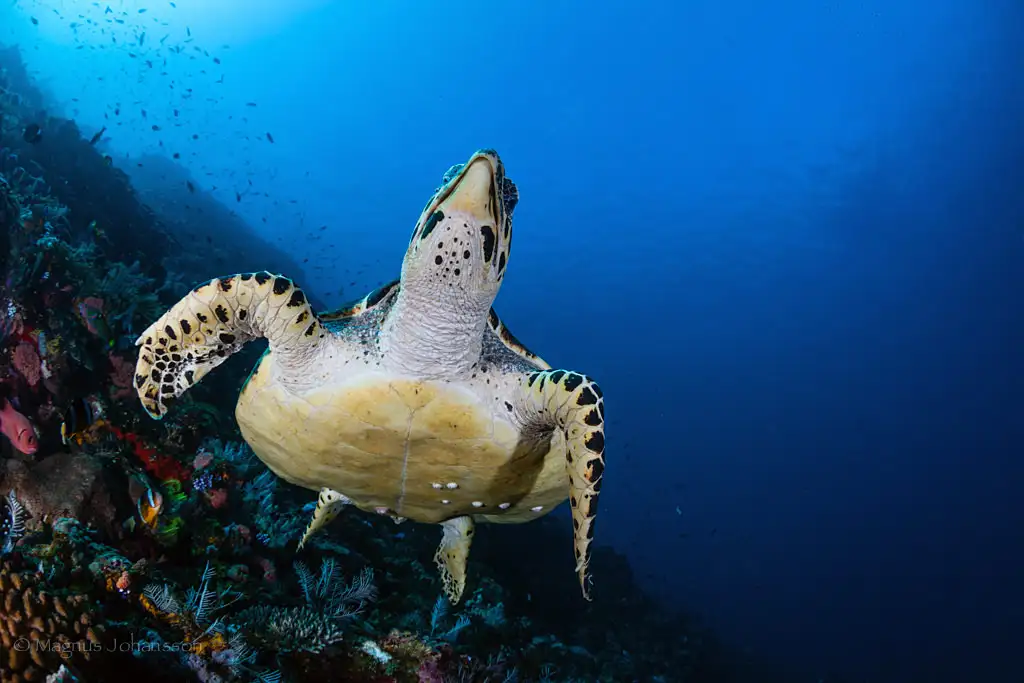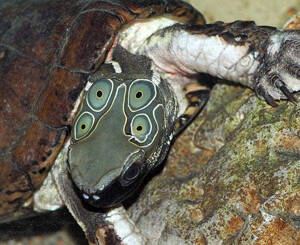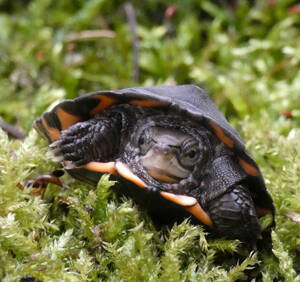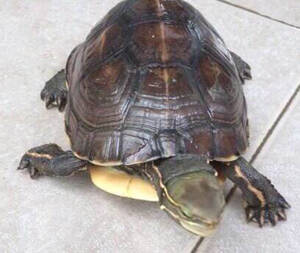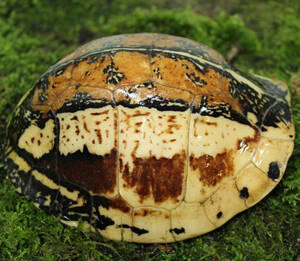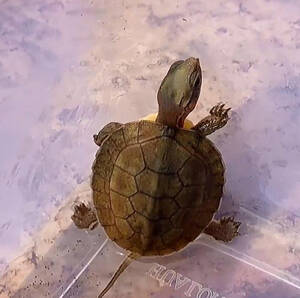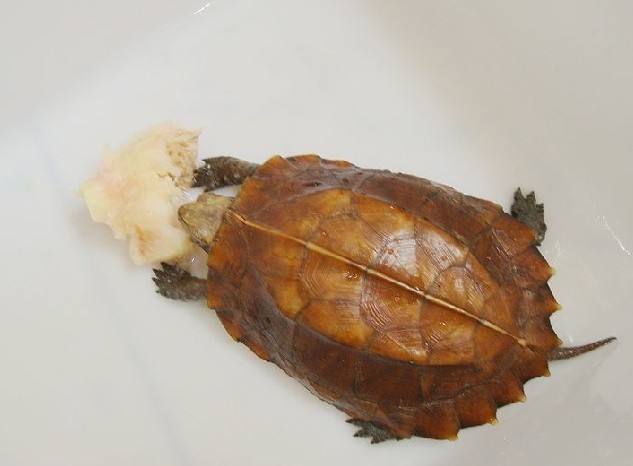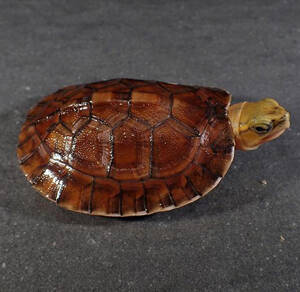Cuora amboinensis
IUCN
LCBasic Information
Scientific classification
- name:Cuora amboinensis
- Scientific Name:Southeast Asian Box Turtle,Southeast Asian Box Turtle,Humpback turtle, Vietnamese turtle, Ambu box turtle
- Outline:Testudines
- Family:Testudinidae B.turtle
Vital signs
- length:About 20 cm
- Weight:About 1kg
- lifetime:30-35years
Feature
They like to live in water and do not fight for food or bite each other.
Distribution and Habitat
Distributed in Bangladesh, Cambodia, India, Indonesia, Malaysia, Myanmar, Thailand, Vietnam and China (Shiwandashan, Guangxi). There are introduced species in North America.
The Malayan box turtle is a semi-aquatic turtle, but it can live in deep water for a short time. It lives in swamps, wetlands, ponds, water swells in rivers and rice fields in plain areas with slow water flow and soft bottom. Although it is a highly aquatic animal, it is also often found on land far away from water. The juveniles are completely aquatic.
Appearance
The head is medium, with the snout protruding from the upper jaw. The snout is about the same length as the orbital diameter, the upper jaw is slightly hooked, and the skin on the back of the head is smooth and scaleless.
The carapace is 196-205 mm long and 141-146 mm wide, the shell is 90-94 mm high, and the shell length is about twice the shell height. The front and back edges of the carapace are round and without concave. The ridges are obvious, without lateral ridges, the cervical shield is medium, the front and back edges of the first vertebral shield are roughly equal; the second vertebral shield is longer than wide; the third vertebral shield is slightly equal to the width; the rear edge of the fourth vertebral shield is about half the length of the front edge; the front edge of the fifth vertebral shield is about half the length of the rear edge.
The plastron is 176.5-186.5 mm long and 98.5 mm wide, slightly shorter than the carapace. The front and back edges are round. A
Details
The Southeast Asian Box Turtle has four subspecies.
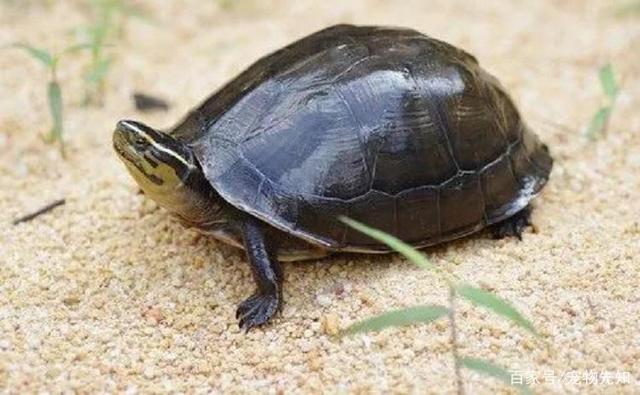
In his book The Reptiles of China, Pope (1935) mentioned two specimens of the Malayan Box Turtle from China, which were preserved in a Paris museum, but their origin was unknown. Cen Jianqiang and Tang Jun (1992) reported that they bought four Malayan box turtles from the Qingping Market in Guangzhou. According to the seller, they were caught from Conghua and Shaoguan in Guangdong. According to this statement, the sellers were not turtle dealers, and they only had two turtles for sale. It was analyzed that they should be local species, thus confirming the existence of Malayan box turtles in China. According to Mr. Zhou Shibao of Guangxi Museum, a staff member of the museum went back to a small place in Guangxi to visit relatives and brought back a leftover Malayan box turtle shell. This happened before the opening of border trade, and the local rural areas were relatively poor and it was impossible to spend money to buy turtles to eat. It could only be caught locally. In addition, Mr. Zhou himself went on a business trip to Shiwandashan and saw someone selling Malayan box turtles by a pond in the countryside. It was analyzed that it was impossible for them to flow back from the city to the remote rural areas for sale. According to the above evidence, the box turtle, the most widely distributed turtle species in Southeast Asia, should appear naturally in Guangxi and Guangdong, China, so it is recorded in "Fauna Sinica".
Under artificial breeding conditions, the Malayan box turtle likes to live in water. When the temperature is high, it will also crawl to the shore to rest. It can eat normally when the ambient temperature reaches 22-25℃, stop eating at around 18℃, and stay still or move less at 15℃. It will enter a hibernation state as the temperature gradually decreases. It is timid and afraid of being disturbed. When resting on the shore, it will immediately rush into the water when it encounters vibration or noise. Some hide in the grass and under the cracks of rocks, while others retract their limbs, head, and tail into the shell, closing the plastron and carapace, commonly known as closed shells. When there is no sound around, they slowly reveal their heads and gradually open their shells. The Malayan box turtle crawls less than other turtles. Except for the high temperature in summer, when it is more active, it rarely crawls. Most of them stick their heads out and stretch their necks to wait and see. The Malayan box turtles do not compete for food or bite each other. Omnivorous. In the wild, it feeds on small animals such as plant stems and leaves, small fish, snails, worms, and insects. In artificial breeding conditions, it likes to eat apples, bananas, tomatoes, small fish, lean pork, and poultry offal.
Malayan box turtles can lay eggs when they weigh about 1,000 grams. The egg-laying season is from April to June each year. There are 3-4 eggs in each nest, but usually only 2 eggs. The eggs are white and oblong. The long diameter of the eggs is 46-57 mm, and the short diameter is 35-57 mm. The egg weighs 25-29 grams.
The main endangered causes of Malayan box turtles: the habitat and breeding environment are destroyed and reduced, and natural proliferation is difficult; they have high economic value, but they have been captured repeatedly, and wild resources have been severely damaged, and they are in an endangered state.
The number of natural resources of Malayan box turtles is decreasing year by year. There are no effective protection measures in the native habitat, and they can be successfully domesticated and bred.
Listed in the "Red List of Endangered Species of the World Conservation Union" (IUCN 2000 ver 3.1) - Vulnerable (VU).
Listed in the "Convention on International Trade in Endangered Species of Wild Fauna and Flora" (CITES) - Appendix II.
Listed in the "List of National Key Protected Aquatic Wildlife Revised by the Ministry of Agriculture in 2000" - Level II.
Protect wild animals and stop eating game.
Maintaining ecological balance is everyone's responsibility!

